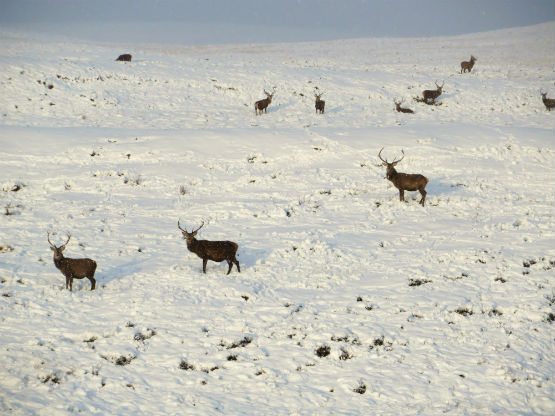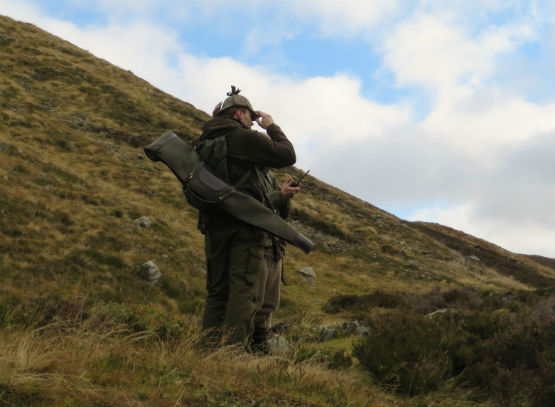The weather in the Highlands of Scotland can be changeable and unforgiving and nobody wants to get caught out. Professional deer stalker, Peter S Jones, reveals what hunting clothing he’ll be wearing in the West Highlands this autumn.
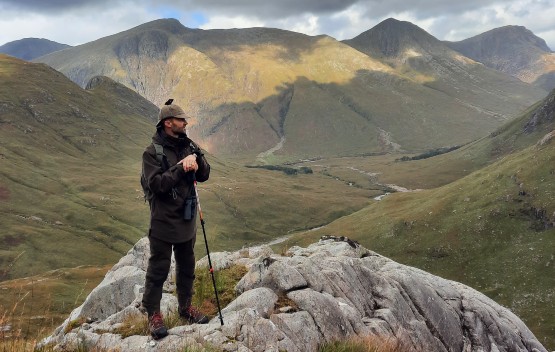
I once heard someone remark that the weather in Scotland consists of eight months of winter, followed by four months of bad weather. Nonetheless, it is one of the most breathtakingly beautiful and exciting places in the world to hunt deer.
The difference between enjoying the experience or enduring it, often comes down to choosing the right clothing.
This year, once again, I have the privilege of taking a group of Capreolus Club members to the West Highlands to stalk the iconic red stag. I’ll be making the trip a little earlier this year than usual, during the milder and hopefully, dryer month of September, instead of my usual October. However, I have hunted the highlands in every kind of weather, often in one day! I have experienced torrential, relentless rain, sunshine and even blizzard conditions, which the UK Met’ Office dramatically described that year, as a weather bomb!
One thing I have learnt, is that you have to go prepared and I am a firm advocate of the phrase, 'that there is no such thing as bad weather, just bad clothing'.
Weather in the highlands is extremely changeable. Yes, by all means check the weather forecast before you set out each day, but be warned, the Munro’s act as small microclimates that are often difficult to predict.
So, with that said, what will I be wearing in the highlands this year?
Well first and foremost, invest in good footwear. Any professional stalker will tell you, that this is the one to get right and conversely, this is the usual thing that people get wrong.
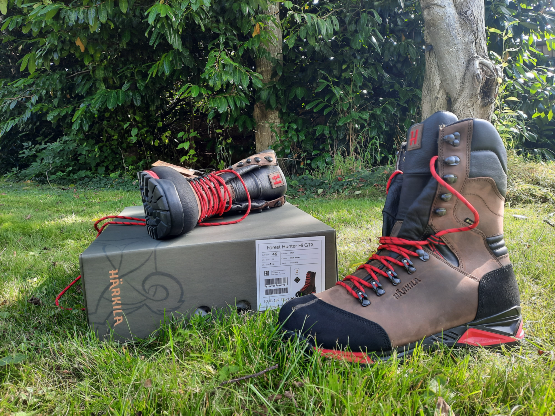
Harkila Forest Hunter Hi GTX Boots purchased from the Barbury Gunshop 01793 940420
In short, it must be a quality waterproof walking boot. The boot should be high on the leg to stop water ingress over the top of the boot when wading through the many ‘burns’, and should be light weight. You may be covering several kilometres, so the last thing you want, is unnecessary weight on the end of each leg. This year, I have ditched my ‘Meindl’ boots, which disappointingly are letting in water after just two years of wear, and am going for a Harkila Forest Hunter Hi GTX boot, which I purchased from my local Barbury Gunshop. This boot is comfortable, lightweight, and high on the leg. Hopefully, it will meet my expectations and last for more than a couple of years.
Under the boot will be a good thick, long thermal sock, and for trousers, I will be taking a warm lined pair of Seeland trousers and an additional pair of Harkila Pro Hunters. This year, I will also be packing a lightweight pair of waterproof over trousers. The reason being, that in the very worst conditions, after several hours of rain, I have found that even the very best quality trousers fail. Regrettably, this has been true of every pair of trousers that I have ever worn. If you walk in driving rain for long enough, sooner or later, you will find, that eventually water will soak the trouser and seep down into your boot from the inside. It will also find a way in through the fly, leaving you with wet feet and a wet crotch, something that is enough to dampen the spirits of even the most excited hunter!
On top, I will wear a good quality, thin thermal under layer. If it’s warm, this will be all I wear under the outer layer. If it’s cold, I will add a fleece and sometimes, if it’s really cold, another long-sleeved T-shirt. Remember however, that when exerting yourself climbing the steepest Munro’s, you can get very hot and sweaty. Which when you stop, quickly results in you developing a chill.
For this reason, I initially prefer to set off up the ‘hill’ feeling a little cold, something that quickly changes as the hike gets underway. I then tuck a spare layer in my rucksack, for if and when I slow my pace and get cold.
For the outer layer, my advice is a long smock with vents and a hood. A long smock covers your belt lining and fly! And when sitting, allows you to sit on the tail of the smock, thereby providing an extra waterproof layer between the wet heather and your derrière! The hood will stop rain water running down the back of your neck and when hunkered up, will add some warmth.
On occassion, in the snow, you should also take a lightweight, white, over garment, so that you don't stick out like a sore thumb in your usual greens and bowns.
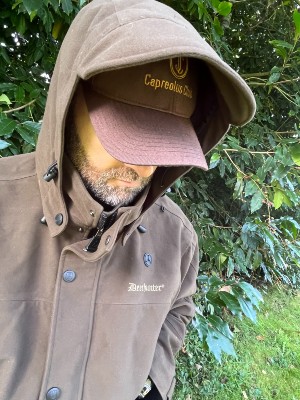 This year, I am wearing a long smock from ‘Deer Hunter’.
This year, I am wearing a long smock from ‘Deer Hunter’.
As for your lid, a cap or hat of some description. This can be anything from a beanie to a flat peaked cap, or a traditional Deerhunter. Albeit, be warned, as great as the ‘Deerhunter’ hat looks, it has a couple of drawbacks. Firstly, the rear peak gets in the way if you pull up a hood. Secondly, when taking a prone shot, the hood, or back of your coat can push up the back peak of the hat and push it up and over your head, causing the front peak to cover your eyes. Something that is far from ideal when you are taking the shot!
As for other items, some people like gloves, however, personally, in anything except cold dry conditions, I don’t. They will almost always eventually fail and just end up sodden wet. Gaiters are a good addition and help protect your trousers and boot from the heather, which can be very abrasive. They also help prevent water ingress into the boot.
Finally, a waterproof rucksack to carry your lunch and spare item of clothing, and a walking stick. I can not tell you how useful this is, underestimate this minor item of equipment at your peril!
The highlands are uneven and riddled with potholes. The stabilising effect of a stick is invaluable, it will help you keep your balance, cross burns, and travers the Munro’s more easily. It will also allow you to take the weight of a particular knee or ankle, should, God forbid, one of your joints get inflamed or irritated.
That’s it! As for rifle, calibre and optics? That’s for another day.
To learn more about how to become a Trained Hunter, a great place to start is by taking the ‘Proficient Deer Stalking Certificate Level 1 (PDS1), a LANTRA Approved course, that includes a specific module on deer stalking in Scotland. Click here to find out more: deer-stalking-course
To watch a short film in which we discuss the best calibre for the Scottish Highlands, click here: youtube
If you are interested in traveling to the Highlands of Scotland to stalk deer, then why not consider joining the Capreolus Club. The club selects the very best locations in Scotland every year for its annual trip. Find out more about the Capreolus Club here: membership-eligibility
To watch a short film about a recent Capreolus Club trip to the Highlands of Scotland follow this link: youtube






